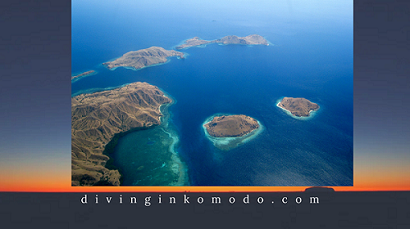About
How to go to Komodo Island? Located in Indonesia, is part of the famous Komodo National Park. This park is celebrated for its diverse marine life, unique wildlife, and breathtaking landscapes. Most notably, the island is home to the Komodo dragon, the world’s largest lizard. Komodo Island is a dream destination for nature lovers, scuba divers, and adventurers. However, its growing popularity brings challenges, particularly in balancing conservation with tourism.
How to Go to Komodo Island
Reaching Komodo Island requires some planning. The journey usually starts with a flight to Bali, Indonesia’s main tourist hub. From Bali, travelers can take a domestic flight to Labuan Bajo, a small town on the island of Flores. Labuan Bajo serves as the gateway to Komodo Island. Several airlines, including Garuda Indonesia, Lion Air, and Wings Air, offer daily flights from Bali to Labuan Bajo. The flight takes about an hour and a half.

Once in Labuan Bajo, visitors have a few options to reach Komodo Island:
- Private Boat Tours: Many travelers choose private boat charters. These tours can be customized to include multiple stops within Komodo National Park. Though more expensive, private tours offer a personalized experience, allowing visits to less crowded spots.
- Liveaboard Cruises: Liveaboard cruises are popular among scuba divers and those looking to explore the park over several days. These cruises provide accommodation on the boat and typically include multiple dives each day, along with visits to various islands within the park.
- Public Ferries: Budget-conscious travelers may prefer public ferries or group tours. These are more affordable but less flexible, with fixed schedules and routes.
- Day Trips: For those short on time, day trips from Labuan Bajo to Komodo Island are available. These trips usually include visits to Komodo Island and nearby Rinca Island, both known for Komodo dragon sightings.
How to go to Komodo Island: Scuba Diving
Komodo Island is renowned for scuba diving, offering some of the most biodiverse marine environments on Earth. The waters around Komodo National Park are home to vibrant coral reefs, manta rays, sharks, and many other marine species. However, diving in Komodo comes with challenges, and it is crucial to consider the impact of tourism on these fragile ecosystems.
The Diving Experience
Diving in Komodo is defined by strong currents, ranging from moderate to very strong depending on the site and time of year. These currents support a wide range of marine life, making the diving experience rich and diverse. Some popular dive sites include:
- Batu Bolong: Known for its stunning coral formations and abundant marine life, Batu Bolong is iconic. Divers often see schools of fish, turtles, and sometimes sharks.
- Manta Point: This site is famous for manta ray sightings. The gentle giants glide through the water, feeding on plankton brought in by the currents.
- Castle Rock: A submerged pinnacle attracting large pelagic fish, Castle Rock is a favorite among experienced divers. The site is known for thrilling drift dives and encounters with sharks, barracudas, and trevallies.
Read more about Scuba diving in Komodo : CLICK !
Environmental Impact
The rise in scuba diving tourism in Komodo National Park has raised concerns about the environmental impact on coral reefs and marine life. Increased boat traffic, careless diving practices, and pollution threaten these delicate ecosystems. To address these risks, several measures have been put in place:
- Marine Protected Areas (MPAs): The Indonesian government has designated parts of Komodo National Park as MPAs, where fishing and other extractive activities are prohibited. This helps preserve biodiversity and allows marine life to thrive.
- Sustainable Diving Practices: Dive operators in Komodo increasingly promote sustainable diving practices. These include proper buoyancy control, not touching or disturbing marine life, and reducing the use of single-use plastics.
- Limiting Tourist Numbers: To prevent overcrowding at popular dive sites, some operators limit the number of divers per boat and per site. This reduces environmental impact and enhances the diving experience by avoiding crowded conditions.
Challenges in Balancing Tourism and Conservation
The growing popularity of Komodo Island presents challenges in balancing the economic benefits of tourism with the need to protect its natural environment. The Indonesian government and local stakeholders face several key challenges:
- Overtourism: The influx of tourists to Komodo Island, especially during peak seasons, strains local infrastructure and can lead to environmental degradation. Managing visitor numbers is essential to prevent damage to the islands’ ecosystems while still supporting tourism.
- Economic Dependence on Tourism: The local economy in Labuan Bajo and surrounding areas relies heavily on tourism. While tourism provides income and employment opportunities, it also makes the region vulnerable to fluctuations in tourist numbers, such as those caused by global pandemics or natural disasters.
- Conservation Funding: Effective conservation requires significant funding for enforcing regulations, managing protected areas, and educating local communities and visitors. Balancing the need for revenue from tourism with the need for conservation investment is an ongoing challenge.
- Community Involvement: Engaging local communities in conservation efforts is crucial for the long-term sustainability of Komodo Island. Initiatives that involve locals in ecotourism, such as training as dive guides or park rangers, can help ensure that tourism benefits are shared and that conservation goals are met.
How to go to Komodo Island?
Komodo Island is a unique destination offering incredible wildlife encounters and world-class scuba diving. However, balancing tourism and conservation is essential. As more people seek to explore Komodo, adopting sustainable practices that protect the island’s natural resources is crucial.
Visitors should be mindful of their environmental impact and choose tour operators that prioritize sustainability. By doing so, they can help ensure that Komodo remains a pristine and vibrant destination for years to come. The decisions made today regarding tourism, conservation, and scuba diving will shape the future of Komodo Island, making it vital to carefully consider all factors.
More about Komodo National Park, CLICK HERE!